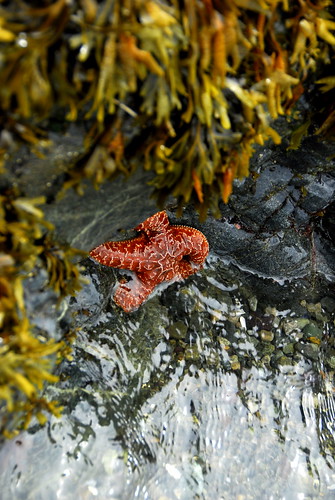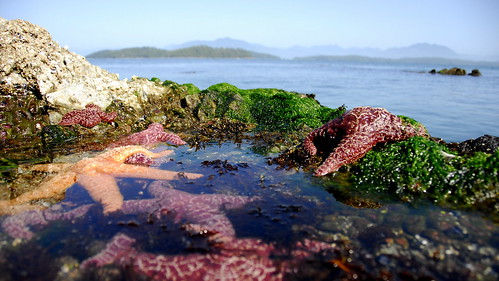It seems as if “star” is an appropriate description for our Echinoderm heroin. It appears that Sea stars and their brethren, such as sea urchins and sea cucumbers are aiding our efforts to rid our atmosphere and oceans of the increasingly detestable carbon dioxide, according to a study done by Mario Lebrato from the Leibniz institute of marine science in Germany. He determined that in total they extract approximately 100 million tons of carbon from the atmosphere each year. But how do they do it?
If you’ve ever picked up a sea urchin or sea star you’ve noticed that they’re far from soft and cuddly. Sea urchins have those hard defensive spines that stick out like a giant billboard message to other sea creatures to stay away and don’t try to bite me because it’ll hurt. The urchin’s body, composed of several plates, supports the spines and is just as hard because it’s made up of the same stuff, calcium carbonate. You’ll find that a sea stars body is similar and even sea cucumbers utilize the structural integrity of calcium carbonate within its tissues.
 |
| The body of a sea urchin. The round cones protruding outward are where the spines normally sit and pivot around. |
 |
A dried up sea star, showing its calcareous skeleton. An image of the ossicles that are present within the tissue of sea cucumbers. |
Calcium carbonate is a chemical compound with the chemical formula CaCO3 and is the main component in the shells of sea creatures like snails and clams. As Echinoderms grow they create more calcium carbonate. The carbon used in its composition comes from carbon dioxide residing in the sea water surrounding the echinoderm. This is how echinoderms are considered to aid in the decrease of carbon dioxide in our oceans. When they die, their bodies settle to the sea bottom and accumulate over time to form chalk, or limestone.
Wiggle, wiggle, little sea star,
How I wonder what you are,
Down below the ocean so big,
Moving slower than a clam can dig,
Wiggle, wiggle, little sea star,
How I wonder what you are,
When the earth’s temperature rises,
When the water increases in sizes,
Then you show your true potential,
Wiggle, wiggle, little sea star,
How I wonder what you are,
Along the clear blue shore where you creep,
Through the waves you often peep,
An Invertebrate awaiting a flood tide,
So that he may sequesters carbon dioxide,
Wiggle, wiggle, little sea star,
Thanks for being what you are.
Sources and Related Links:


No comments:
Post a Comment